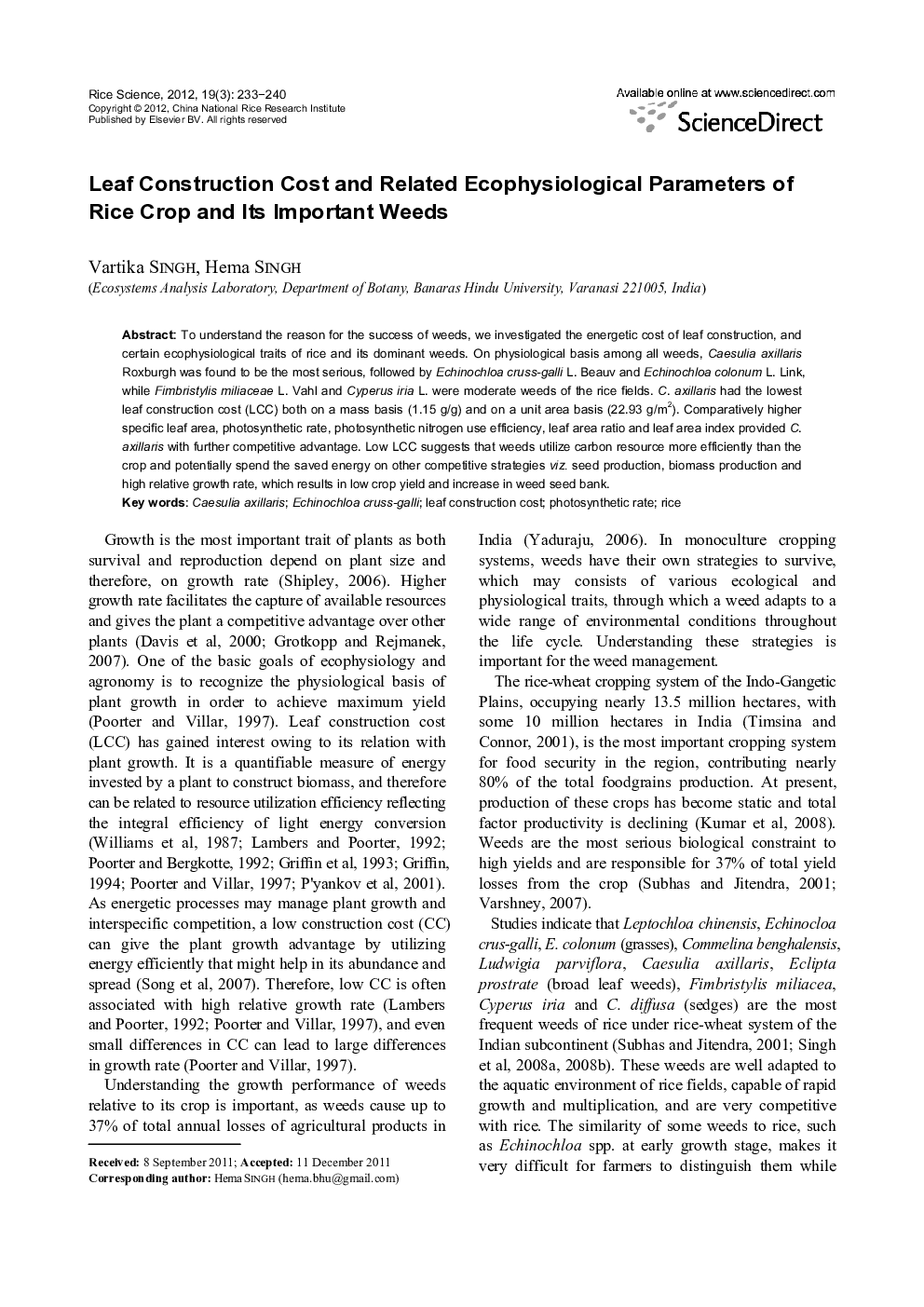| Article ID | Journal | Published Year | Pages | File Type |
|---|---|---|---|---|
| 4502047 | Rice Science | 2012 | 8 Pages |
To understand the reason for the success of weeds, we investigated the energetic cost of leaf construction, and certain ecophysiological traits of rice and its dominant weeds. On physiological basis among all weeds, Caesulia axillaris Roxburgh was found to be the most serious, followed by Echinochloa cruss-galli L. Beauv and Echinochloa colonum L. Link, while Fimbristylis miliaceae L. Vahl and Cyperus iria L. were moderate weeds of the rice fields. C. axillaris had the lowest leaf construction cost (LCC) both on a mass basis (1.15 g/g) and on a unit area basis (22.93 g/m2). Comparatively higher specific leaf area, photosynthetic rate, photosynthetic nitrogen use efficiency, leaf area ratio and leaf area index provided C. axillaris with further competitive advantage. Low LCC suggests that weeds utilize carbon resource more efficiently than the crop and potentially spend the saved energy on other competitive strategies viz. seed production, biomass production and high relative growth rate, which results in low crop yield and increase in weed seed bank.
